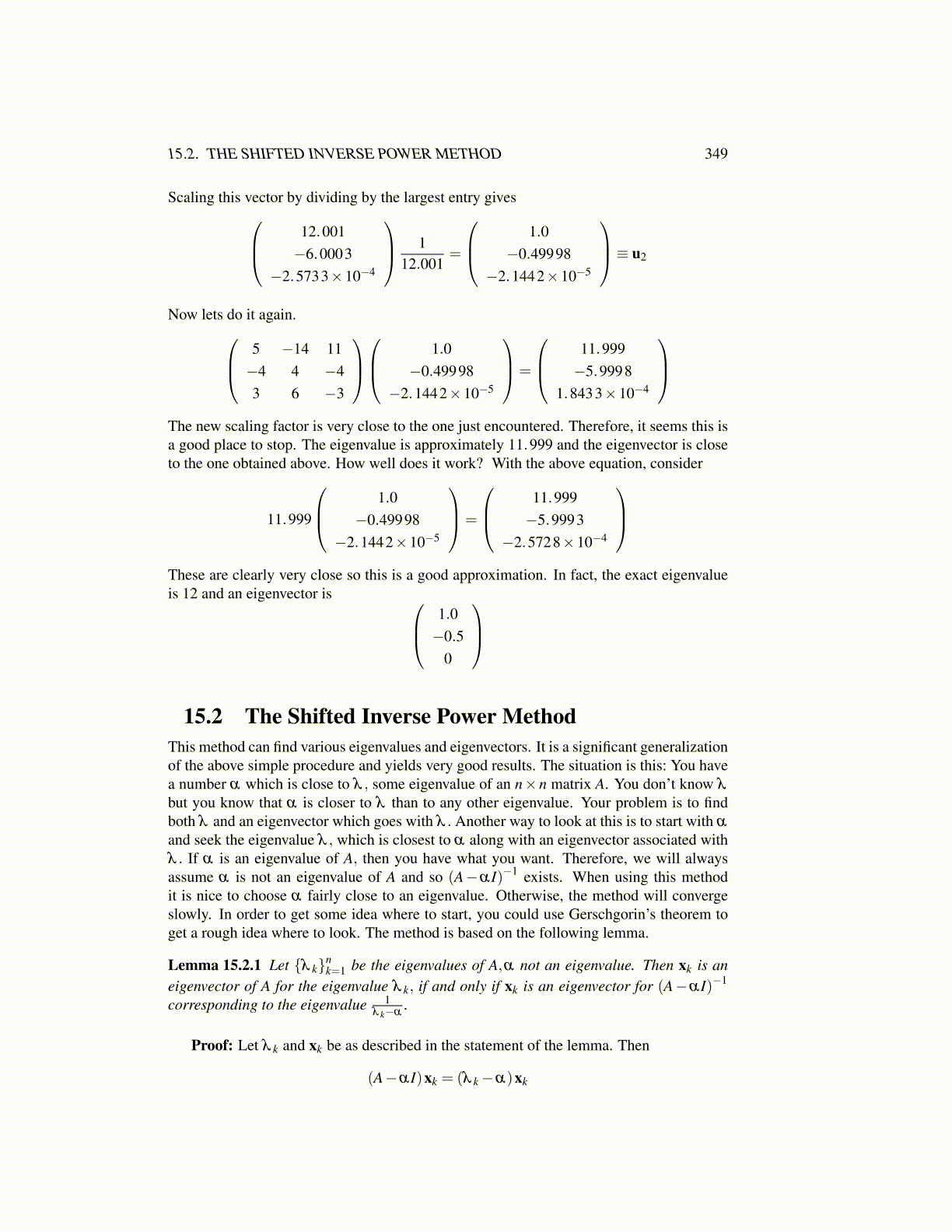
15.2. THE SHIFTED INVERSE POWER METHOD 349
Scaling this vector by dividing by the largest entry gives 12.001−6.0003
−2.5733×10−4
112.001
=
1.0−0.49998
−2.1442×10−5
≡ u2
Now lets do it again. 5 −14 11−4 4 −43 6 −3
1.0
−0.49998−2.1442×10−5
=
11.999−5.9998
1.8433×10−4
The new scaling factor is very close to the one just encountered. Therefore, it seems this isa good place to stop. The eigenvalue is approximately 11.999 and the eigenvector is closeto the one obtained above. How well does it work? With the above equation, consider
11.999
1.0−0.49998
−2.1442×10−5
=
11.999−5.9993
−2.5728×10−4
These are clearly very close so this is a good approximation. In fact, the exact eigenvalueis 12 and an eigenvector is 1.0
−0.50
15.2 The Shifted Inverse Power MethodThis method can find various eigenvalues and eigenvectors. It is a significant generalizationof the above simple procedure and yields very good results. The situation is this: You havea number α which is close to λ , some eigenvalue of an n×n matrix A. You don’t know λ
but you know that α is closer to λ than to any other eigenvalue. Your problem is to findboth λ and an eigenvector which goes with λ . Another way to look at this is to start with α
and seek the eigenvalue λ , which is closest to α along with an eigenvector associated withλ . If α is an eigenvalue of A, then you have what you want. Therefore, we will alwaysassume α is not an eigenvalue of A and so (A−αI)−1 exists. When using this methodit is nice to choose α fairly close to an eigenvalue. Otherwise, the method will convergeslowly. In order to get some idea where to start, you could use Gerschgorin’s theorem toget a rough idea where to look. The method is based on the following lemma.
Lemma 15.2.1 Let {λ k}nk=1 be the eigenvalues of A,α not an eigenvalue. Then xk is an
eigenvector of A for the eigenvalue λ k, if and only if xk is an eigenvector for (A−αI)−1
corresponding to the eigenvalue 1λ k−α
.
Proof: Let λ k and xk be as described in the statement of the lemma. Then
(A−αI)xk = (λ k−α)xk